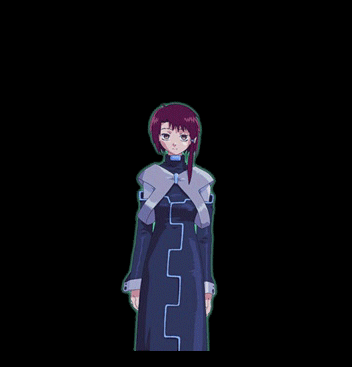
Where do I start with this crazy game? Serial Experiments Lain was made in 1998 as a companion piece of sorts to the legendary anime of the same title.
The game follows the same basic premise as the show: a disillusioned young girl slowly becomes more engrossed with the internet, and eventually finds it takes over her world entirely, both in the literal and spiritual sense.
What makes the game version different is that it takes place entirely in a virtual world of sorts, where you access datalogs, interviews, and diary entries sprinkled with occasional animated sequences to try and piece together Lain’s story and unravel the mystery of her existence and those she interacts with.

While most of the entries are in chronological order, some are locked out until you access others first, or aren’t visible at all. Some don’t even let you see them until after you reach the ‘end’ of the game(more on this later).

First, I can’t continue any further without giving credit to a massive undertaking: the team responsible for translating the entire game and putting it up as a website. https://laingame.net/
This takes what was thought to be an untranslatable game, due to the massive amount of dialogue-only sequences with no subtitles, and not only making it accessible to a non-Japanese speaking audience, but doing it well. The translation work is spectacular, and even makes it so you can access any of the numerous audio/video sequences on the fly, so mad props to the team for an incredible effort: I can’t stress enough how much they knocked it out of the park.
As for the interface itself, a virtual depiction of Lain is shown moving through the virtual world to navigate the numerous entries, accompanied by colorful expressions, idle animations, and even whimsical pratfalls when the player tries to access an unavailable datalog.
The cutscenes have a visual style all their own, surprisingly by the same studio that did the 1998 anime, albeit with a completely unique look.

The writing is the highlight, as well as the artwork, contributed by two of the most important members of Lain’s team: the writer(Chiaki J. Konaka) and of course, the inimitable artist: Yoshitoshi ABe. The game is also fully voice acted, with Lain’s actress reprising her role. There’s only a handful of other voice actors, but all their work is excellent, especially that provided by Touko.


ABe’s artwork is seen as backdrops for several events in the game, often depicting mundane things like Lain receiving her first computer, accessing email, or even giving her psychiatrist, Touko, some cookies.

Touko is also a crucial part of the game’s narrative. Touko arguably has the most multi-faceted personality in the game. Some entries are her attempts to diagnose Lain’s increasingly unstable state of mind via their psychology sessions, some are her professional observations through personal notes, and others are even her private diary entries. Through these recordings and those of Lain herself, the game allows an intimate view of both an unstable subject’s bouts with mental illness, and how it comes to affect those around them, especially as the worlds of the internet and the real world begin to blur, much like in the show.
It bears warning that Lain PSX deals with very heavy subject matter in addition to its already delicate subject of mental illness. Hallucinations, schizophrenia, unrequited love, parental conflicts, alcoholism, abandonment, abuse, bullying, and even suicide are all fair game for Lain’s narrative, so sensitive viewers need be warned.
That said, if the player has the patient for the game’s sensitive subject matter, it spins a narrative just as engrossing, unique, and often startling as the anime, especially when it goes to darker realms that the anime only touched lightly on. (It’s worth noting that while suicide is also a factor in the story of the series, it happens at the very start of the series, while it doesn’t become an element until much later on in the game.)

Lain is an experiment that takes much patience to experience, and requires just as much thought to fully take on an understanding of the narrative. Also, much like the anime, it’s bound to leave an impact long after the credits roll.
SPOILERS FOLLOW

After the final diary from either Lain or Tohko, and Lain is fully ‘integrated’ into the wired, you unlock most of the missing datalogs: little snippets of wisdom(?) and advice from Lain in a virtual form, suggesting that you’ve been using her digital medium to access all the information you’ve been reading thus far.

While these post-game snippets are hardly mandatory, they’re fascinating, and a vaguely Monika-ish epilogue worth glancing at here and there.

